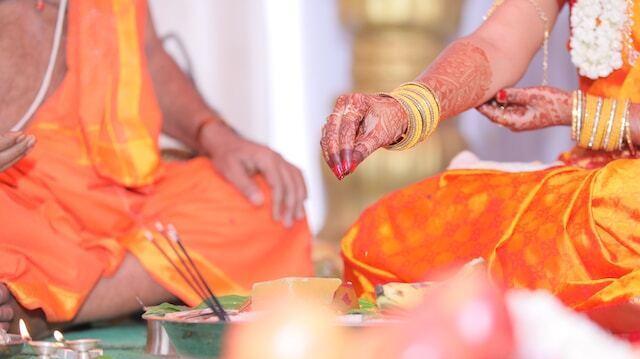Sanatan Dharma, often referred to as Hinduism, is a profound and ancient spiritual tradition that encompasses a rich tapestry of rituals, beliefs, and practices. Among these, pujas hold a central place, serving as a bridge between the earthly and the divine. In this blog, we will explore the significance of pujas in Sanatan Dharma, their role in spiritual practice, and how they contribute to personal and collective well-being.
Understanding Puja: A Sacred Ritual
Puja, derived from the Sanskrit word meaning “worship” or “reverence,” is a ritualistic act of offering devotion and respect to deities, spirits, or sacred entities. It is an integral aspect of Sanatan Dharma and encompasses a range of practices, from elaborate ceremonies in temples to simple, heartfelt offerings at home.
The essence of puja lies in creating a sacred space where the devotee can connect with the divine. This connection is facilitated through a series of structured steps, including the preparation of the ritual space, the offering of materials like flowers, incense, and food, and the recitation of mantras and prayers. Each element of the puja serves to honor the divine and invoke blessings, prosperity, and spiritual growth.
The Spiritual Significance of Puja
- Cultivating Devotion (Bhakti): At its core, puja is an expression of bhakti, or devotion. It allows individuals to manifest their love and reverence for the divine through tangible actions. By participating in puja, devotees express their gratitude and seek to strengthen their bond with the divine. This practice fosters a sense of connection and devotion that transcends the material world.
- Creating Sacred Space: Performing puja transforms ordinary spaces into sacred ones. The ritual acts of cleaning, decorating, and preparing offerings elevate the environment and imbue it with spiritual significance. This sacred space becomes a focal point for spiritual practice, meditation, and communion with the divine.
- Aligning with Cosmic Order: Puja rituals often align with the natural and cosmic rhythms, reflecting the belief in a harmonious order of the universe. By performing pujas at specific times or during particular seasons, devotees synchronize their spiritual practices with the larger cosmic forces, seeking to align their lives with divine harmony.
The Role of Puja in Daily Life
- Fostering Mindfulness: Incorporating puja into daily life encourages mindfulness and presence. The ritualistic nature of puja requires individuals to focus their attention on the act of worship, creating a moment of pause in their busy lives. This mindful practice can lead to greater self-awareness and inner peace.
- Promoting Family Unity: Many pujas are performed collectively by families, reinforcing bonds and shared values. The act of coming together for a common purpose strengthens familial ties and provides an opportunity for spiritual education and growth. Family pujas can serve as a foundation for nurturing spiritual values in the next generation.
- Offering Protection and Prosperity: Puja rituals are often performed to seek divine protection, health, and prosperity. Whether it is a daily offering or a special ceremony for a significant occasion, pujas are believed to attract positive energies and safeguard individuals from negative influences. The act of offering food, flowers, and prayers is seen as a means of invoking divine blessings and ensuring well-being.
The Diversity of Puja Practices
Sanatan Dharma encompasses a wide range of puja practices, each tailored to specific deities, occasions, and individual preferences. Some common types include:
- Daily Puja (Nitya Puja): A regular practice performed at home or in temples, daily pujas often involve the worship of household deities or revered gods. These rituals can be simple or elaborate, depending on personal or familial traditions.
- Special Puja (Naimittika Puja): Special pujas are conducted for specific events, such as birthdays, anniversaries, or festivals. These rituals are often more elaborate and involve community participation. Festivals like Diwali, Navaratri, and Ganesh Chaturthi feature prominent pujas that celebrate deities and seasonal changes.
- Ceremonial Puja (Samskara Puja): Samskara pujas are associated with significant life events such as birth, marriage, and death. These rites of passage are integral to personal and communal life, marking transitions and seeking divine blessings for new beginnings and important milestones.
The Modern Relevance of Puja
In the modern world, where technology and fast-paced lifestyles often dominate, pujas provide a grounding force. They offer a way to reconnect with spiritual roots, create moments of reflection, and find solace amidst the chaos. The adaptability of puja practices allows them to fit into contemporary life while preserving their traditional essence.
Many individuals now integrate pujas into their busy schedules by opting for simpler, yet meaningful rituals. Online platforms and virtual pujas have also emerged, making it easier for people to participate in traditional practices regardless of their location.
Conclusion
Pujas are more than mere rituals; they are a profound expression of devotion, a means of creating sacred spaces, and a tool for aligning with cosmic order. In Sanatan Dharma, pujas play a crucial role in fostering spiritual growth, promoting family unity, and seeking divine blessings. As we navigate the complexities of modern life, the timeless practice of puja offers a beacon of spirituality and a reminder of our connection to the divine. By embracing and understanding the significance of pujas, we enrich our lives and honour the eternal traditions of Sanatan Dharma.

